 BACK TO GALLERY
BACK TO GALLERY
Daniel Crouch Rare Books
James Otto LEWIS
The Aboriginal Port Folio
“The first attempt made in the United States at a large scale work devoted to the American Indian".
391 by 270mm.
description
First edition. The costly and time-consuming publication was originally issued in 10 parts, with 8 plates per number, in printed wrappers. The publisher was forced into bankruptcy while part nine was in the press, however, reducing the edition and forcing part ten to be just barely finished and sparsely distributed. A projected eleventh part would have contained ‘Historical and Biographical Description of the Indians’, but was never completed.
Scarcer than McKenney and Hall's History of the Indian Tribes, Maximilian's Reise in das Innere von Nord-America or Catlin's North American Indian Portfolio, Lewis's work records the dress of the Potawatomi, Winnebago, Shawnee, Sioux, Miami, Fox, Iowa and other tribes at treaties of Prairie du Chien, Fort Wayne, Fond du Lac and Green Bay.
"This was the first attempt made in the United States at a large scale work devoted to the American Indian. Lewis conceived the idea of a folio series of Indian portraits while accompanying Gov. Lewis Cass of Michigan on a tour of the Great Lakes in 1825-1827. He was not able to begin publication until 1835, when the work was advertised as ten parts, each with eight plates, issued in wrappers. The lithographers, George Lehman and Peter S. Duval, did a creditable job, but could not overcome the miserable execution of poor Lewis. Subscribers dropped away, and the last two parts are famously rare as a result. The supplement in a promised broadside advertisement never appeared. Nonetheless, it is a pioneering work among such publications" (Reese).
Copies of his works were made by Charles Bird King, who later used some of his own versions of the images in the McKenney and Hall portfolio. All of Lewis's paintings were destroyed in the Smithsonian fire of 1865.
Examples with the complete set of 80 plates are scarce; most have 72, as here.
Scarcer than McKenney and Hall's History of the Indian Tribes, Maximilian's Reise in das Innere von Nord-America or Catlin's North American Indian Portfolio, Lewis's work records the dress of the Potawatomi, Winnebago, Shawnee, Sioux, Miami, Fox, Iowa and other tribes at treaties of Prairie du Chien, Fort Wayne, Fond du Lac and Green Bay.
"This was the first attempt made in the United States at a large scale work devoted to the American Indian. Lewis conceived the idea of a folio series of Indian portraits while accompanying Gov. Lewis Cass of Michigan on a tour of the Great Lakes in 1825-1827. He was not able to begin publication until 1835, when the work was advertised as ten parts, each with eight plates, issued in wrappers. The lithographers, George Lehman and Peter S. Duval, did a creditable job, but could not overcome the miserable execution of poor Lewis. Subscribers dropped away, and the last two parts are famously rare as a result. The supplement in a promised broadside advertisement never appeared. Nonetheless, it is a pioneering work among such publications" (Reese).
Copies of his works were made by Charles Bird King, who later used some of his own versions of the images in the McKenney and Hall portfolio. All of Lewis's paintings were destroyed in the Smithsonian fire of 1865.
Examples with the complete set of 80 plates are scarce; most have 72, as here.




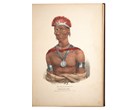
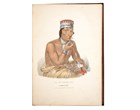
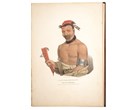
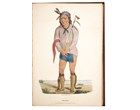
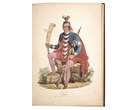
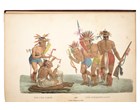
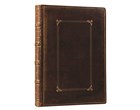
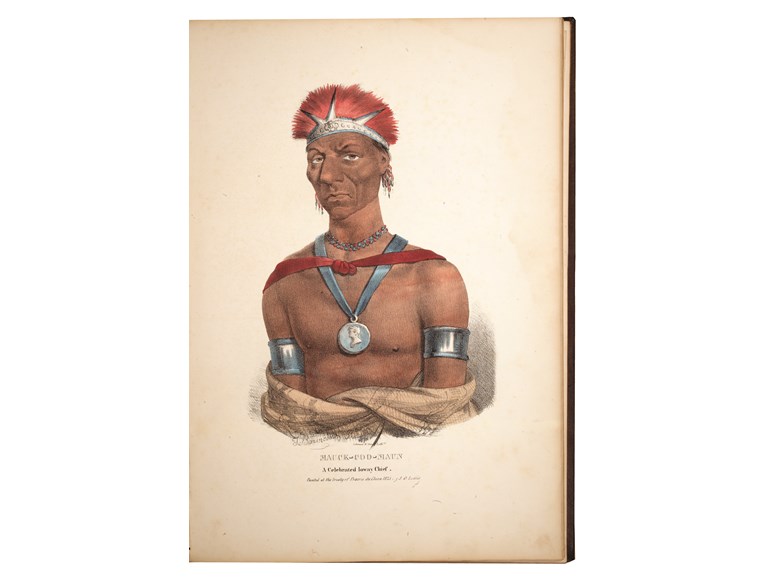
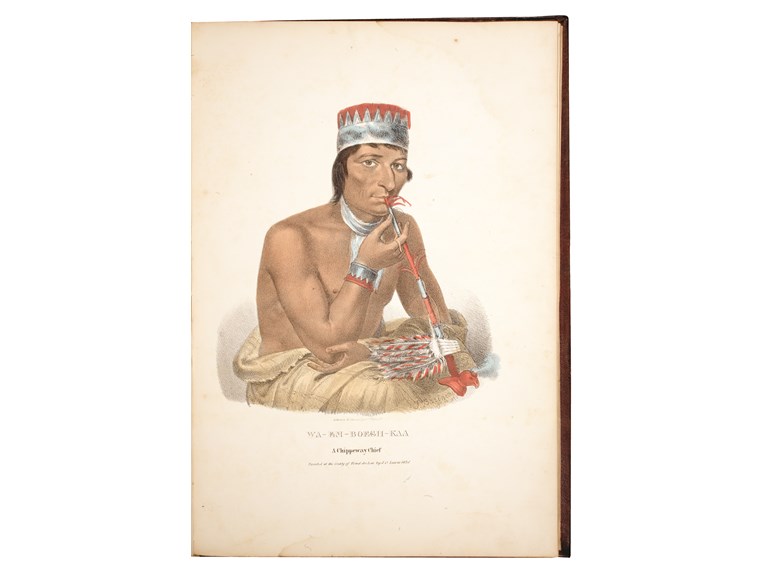

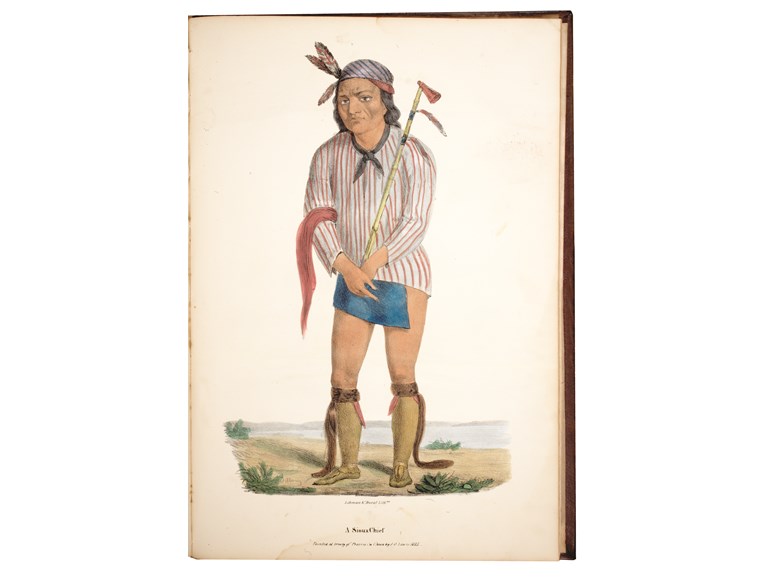
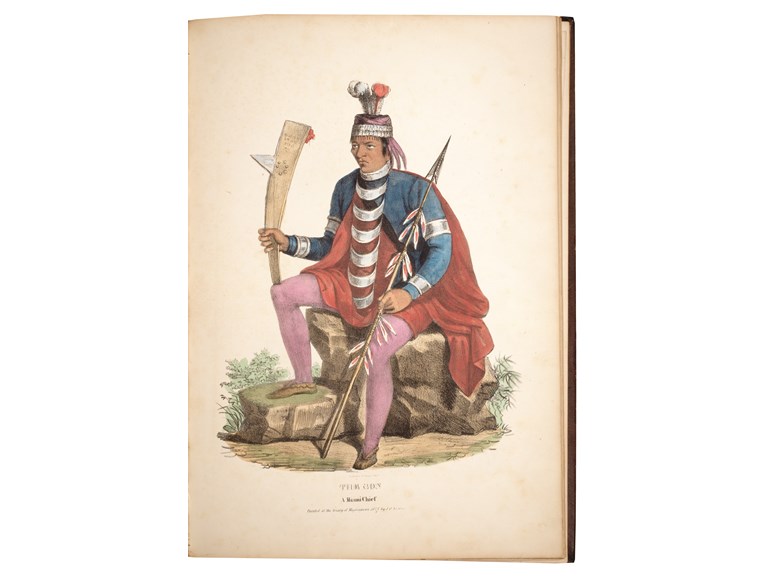
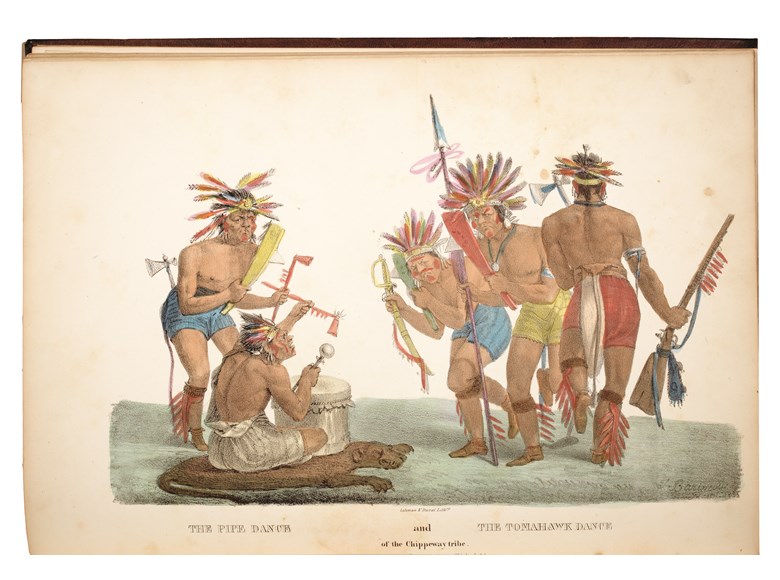
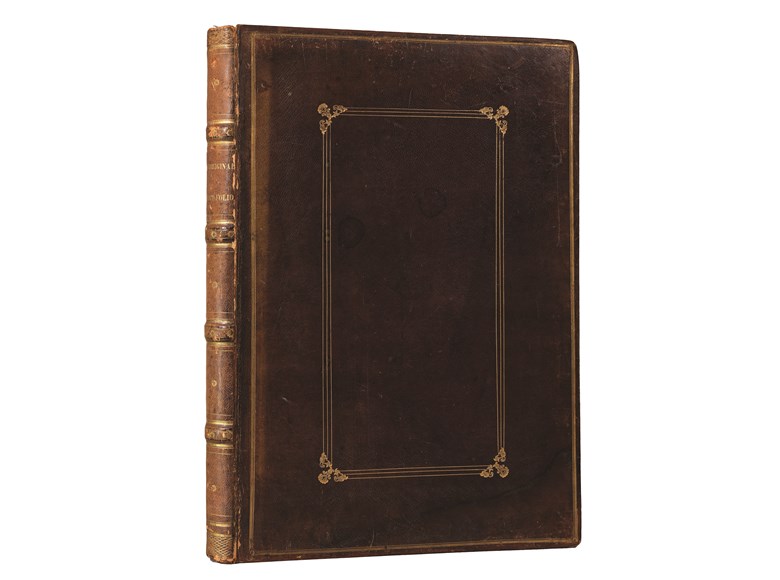
 SEND AN EMAIL
SEND AN EMAIL
 (212) 602 1779
(212) 602 1779